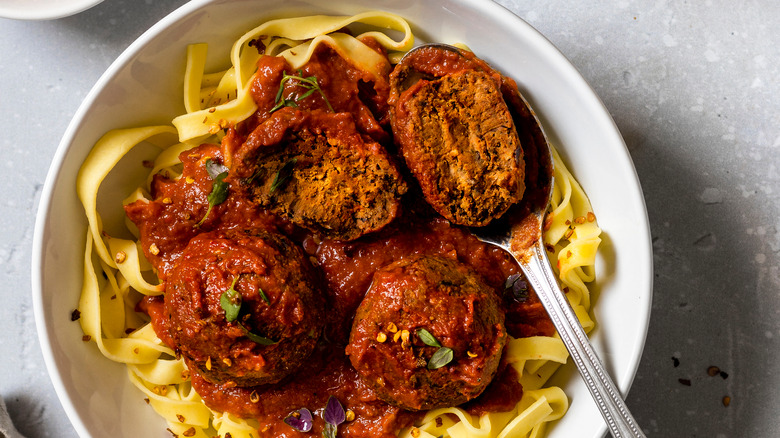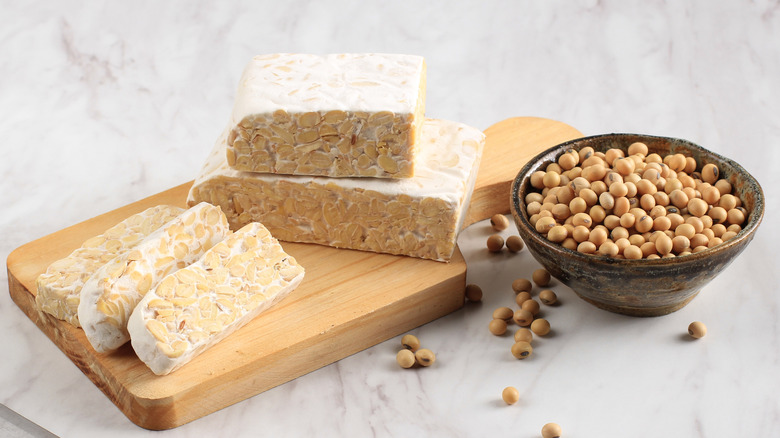Why You Should Use Tempeh For Meatless Meatballs
When it comes to comfort food, we can think of a few dishes that bring us that warm feeling of satisfaction and wellbeing: Burgers and fries, pizza, and chicken noodle soup. Another one we'd add to the list? Spaghetti and meatballs. Who among us doesn't have fond memories of our mom or dad boiling up some pasta, depositing some juicy meatballs on top, and ladling the bowl with some steaming red sauce?
Well ... for vegetarians, that memory might not be such a delicious one. Even if you ate meat as a kid, if you no longer do, the idea of indulging in meatballs might not be appealing anymore. But what if you could make a vegetarian — actually, even a vegan — version that's just as tasty as the original? Turns out you can, and the secret to meatless "meatballs" is an ingredient you might not have thought to include. Here's how to bring this comfort food classic into your meatless repertoire.
The secret's in the soy
If you don't eat meat, chances are you're more than familiar with soy substitutes. For many vegetarians and especially for vegans, soy products are the holy grail when it comes to ensuring a varied diet. And when you think of soy, your mind might go straight to tofu. It's an effective and delicious substitute for meat in many cases, but if you're looking to recreate the dense, firm texture of meat, there's another soy product you should know about — tempeh.
Tempeh is made of cooked, fermented soybeans that are then molded into a brick-like cake. The result is a firm loaf that you can slice or crumble to incorporate into a wide variety of dishes that will take on a firm texture that can closely approximate meat. One dish in which tempeh works extraordinarily well is meatballs because of its texture. It's also less processed than tofu, resulting in a product that retains more protein and fiber than its tofu cousin.
To make tempeh meatballs, grind tempeh in the food processor with onions, garlic, vegan parmesan, and Italian seasoning, roll the balls in breadcrumbs, then fry them to golden brown in a skillet. Served over cooked pasta with a healthy pour of marinara sauce, this fully meat-free dish will transport vegans and vegetarians back to their childhood table — with no animals harmed in the process.

